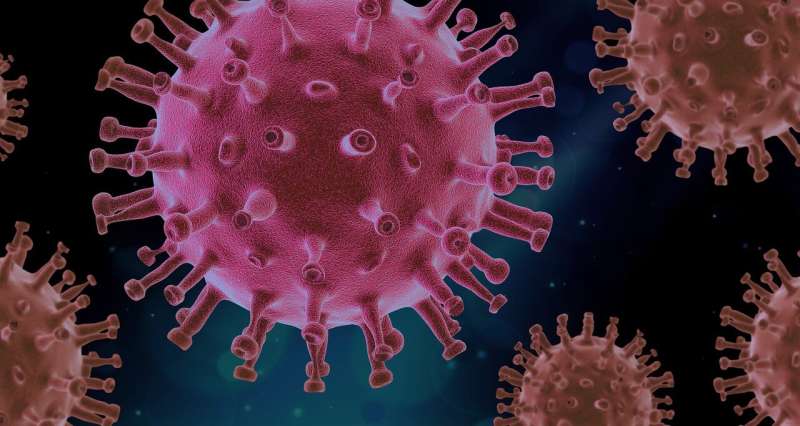Research sheds light on relationship between political affiliations and interpretations of COVID-19 graphs

Throughout the COVID-19 pandemic, we've been inundated with data in the form of charts and graphs that show important metrics related to the virus. For example, bar graphs have been used to plot the number of cases in various countries, and line graphs have been used to show trends in the number of cases over time ("the curve"). Data visualizations like these are critically important tools that policy makers, public health organizations, and agencies such as the CDC use to communicate important information on the virus to the public.
Despite widespread dissemination of these visualizations, the public's response to the pandemic in the United States has often diverged sharply along political lines, raising important questions about how virus data are being interpreted. For example, is there a relationship between our political affiliations and how we see and interpret COVID-19 graphs? When Democrats and Republicans look at a line graph showing the number of COVID cases over time, do they generally agree on the slope of line in degrees, or do they actually see entirely different line slopes? And do members of the two parties agree in terms of the words that they select to subjectively interpret the slope of "the curve"?
Dr. Jonathan Ericson, Dr. William Albert, and Bentley Ph.D. Student Ja-Naé Duane, recently published a study on this timely and important topic in Big Data & Society. The team surveyed more than 700 U.S. residents and showed separate groups of Democrats and Republicans graphs containing COVID-19 data on the number of cases or the number of deaths. Some of the graphs were re-labeled so that the participants would think that Influenza (Flu) data were being shown in the graph instead of COVID-19 data. This allowed the researchers to compare the participants' evaluations of graphs showing COVID-19 data to evaluations of graphs showing Flu data.
The team found that the Democrats and Republicans in their study sample saw the graphs similarly in terms of actual percentages and line slopes in degrees. For example, members of both parties agreed that the mathematical slope of "the curve" in COVID-19 line graphs was steeper than the curve in the Flu-labeled line graphs, even though the slopes were adjusted to be exactly the same in all of the graphs. This result shows that members of both parties agreed on the mathematical features of the data, and it also suggests that members of the two political parties shared a heightened awareness of COVID-19 in comparison to the Flu. However, members of the two parties selected different words when they were asked to describe the data in terms of whether the curve was "slightly" or "sharply" increasing. The research team concluded: "While we may see graphs of infectious disease data similarly from a purely mathematical or geometric perspective, our political affiliations may moderate how we subjectively interpret the data…people do not approach public health data with a blank slate—rather, political affiliations may moderate subjective interpretations of COVID-19 graphs."
This study is important because it provides research-based evidence that although members of the two parties may agree on the mathematical features of a graph, such as percentages and line slopes, subjective interpretations of those features (e.g., whether a trend line is "slightly" or "sharply" increasing) may diverge along political lines. The team notes in their article that they see this research as confirming how critically important it is that researchers, policy makers, and data professionals "continually seek to clarify the relationship between how data are presented and how they are subjectively interpreted and continually seek new ways of ethically displaying data that promote shared understanding and minimize our biases."
More information: Jonathan D Ericson et al, Political affiliation moderates subjective interpretations of COVID-19 graphs, Big Data & Society (2022). DOI: 10.1177/20539517221080678
Provided by Bentley University




















